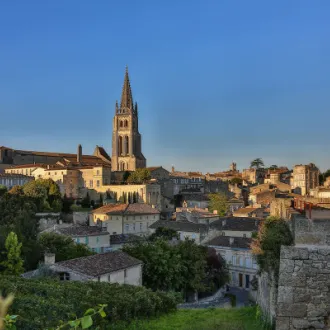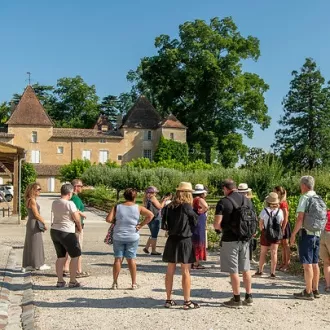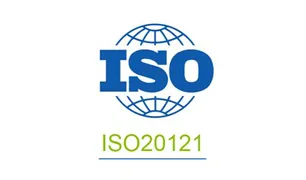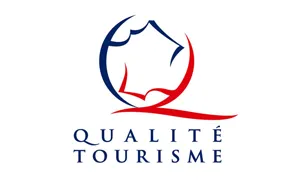Discover the prestigious wines of Saint-Emilion! Discover the famous village of Saint-Emilion and two right bank châteaux: a beautiful family-run estate & a Great Classified Growth estate. Enjoy the amazing hilly vineyard landscapes of the region.
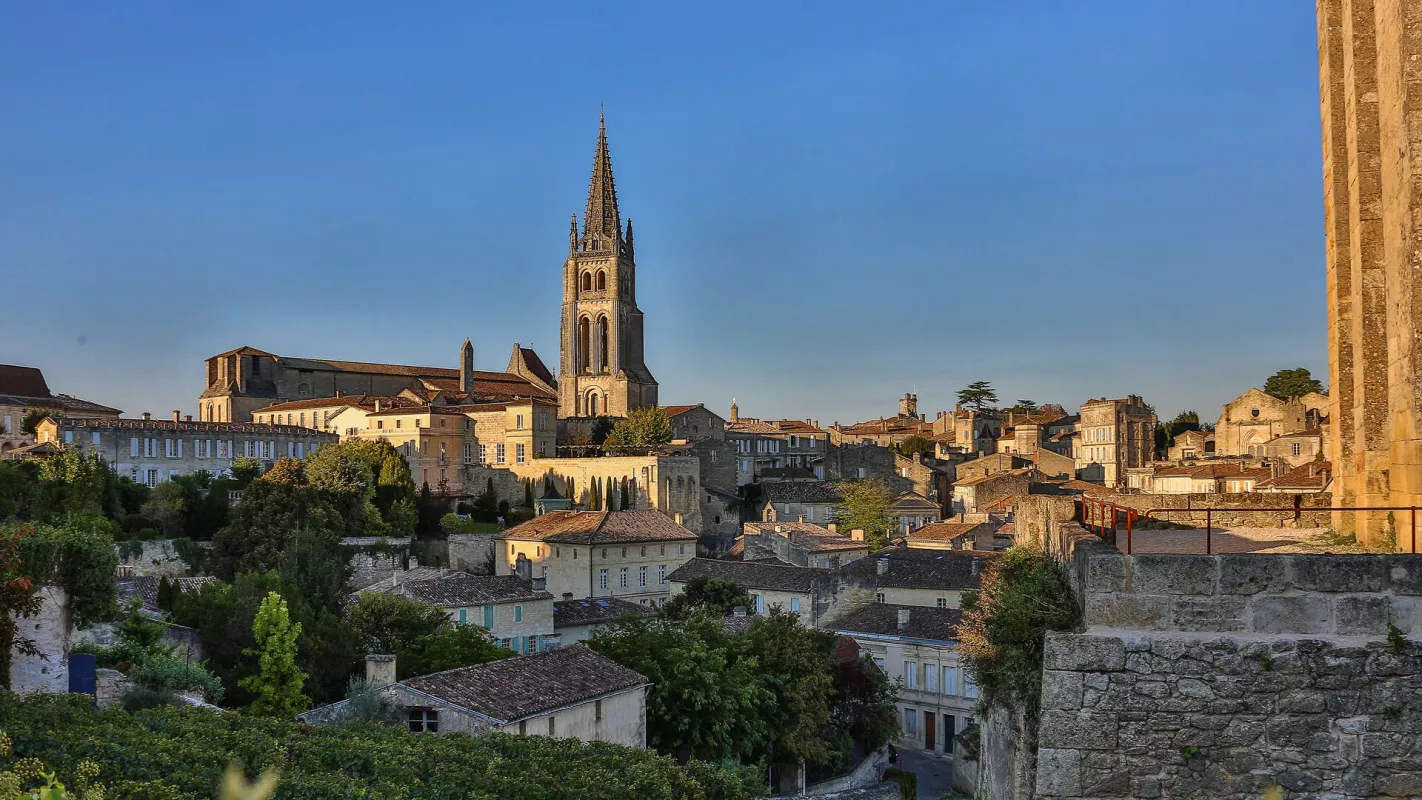
A day in Saint-Émilion, Pomerol, and Fronsac
Listed as a UNESCO World Heritage Site, the wine-growing and cultural landscapes of Saint-Emilion, together with the neighbouring designations of Pomerol and Fronsac, form an exceptional group of Appellations d’Origine Contrôlée (AOCs) wines and historic sites established on one of the most legendary Bordeaux wine routes.
Saint-Emilion, an exceptional wine region
On the right bank of the river, the Saint-Emilion wine-growing region gathers more than 900 winegrowers. It boasts a unique mosaic of terroirs, plots, and small wineries. The geological diversity of the soils, predominantly clay and limestone, allows for skilful and expressive blends of grape varieties. The omnipresent Merlot, complemented by Cabernet Franc and Cabernet Sauvignon, gives Saint-Emilion red wines their unique finesse and personality. For the past 20 years, the oenologists of the l'École du Vin (Wine School) have shared this passion for Saint Emilion wines with the general public. They offer year-round fun and educational initiations to the wines of the four appellations: Saint-Émilion, Saint-Émilion Grand Cru, Lussac Saint-Émilion, and Puisseguin Saint-Émilion.
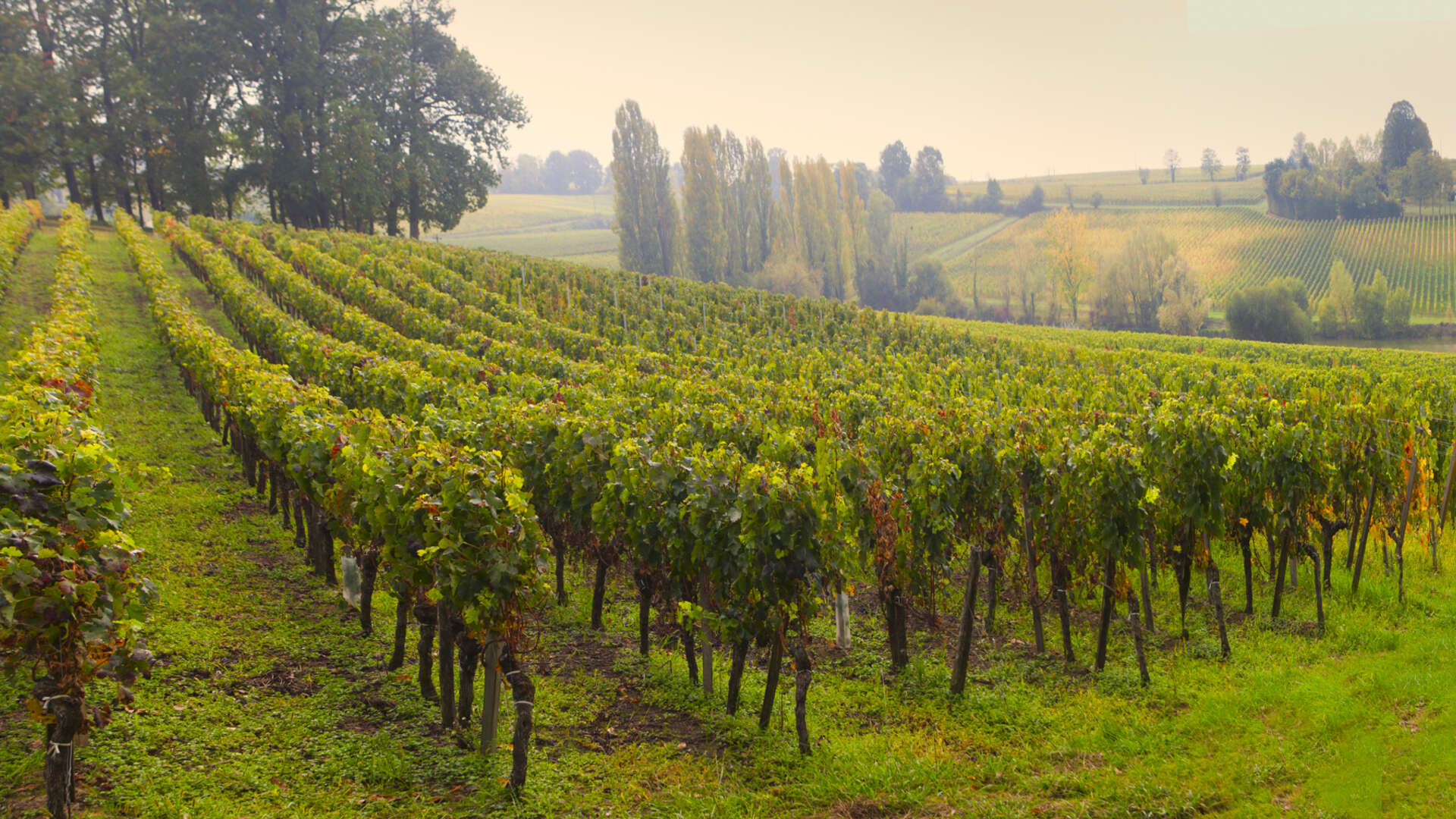
A natural and cultural heritage
The first wine-growing landscape to be listed as a UNESCO World Heritage Site, Saint-Émilion is also an age-old medieval town steeped in history. Guided tours allow you to discover the Grotte de l’Ermitage, the cave where the monk Emilion took refuge, or the Monolithic Church, the largest underground religious building in Europe, a gateway to the mysterious and gloomy world of the catacombs, dug into the rock before the year 1000. Topped by a 68-metre bell tower, the church overlooks the town and offers spectacular views of the vineyards and the Dordogne valley. But it is at the top of another historic belvedere, the Tour du Roy, the only Romanesque donjon still intact in Gironde, that the Jurade de Saint-Émilion - an ancient traditional brotherhood - solemnly proclaims the “Judgement of the New Wine” every year in June and the harvest in September.
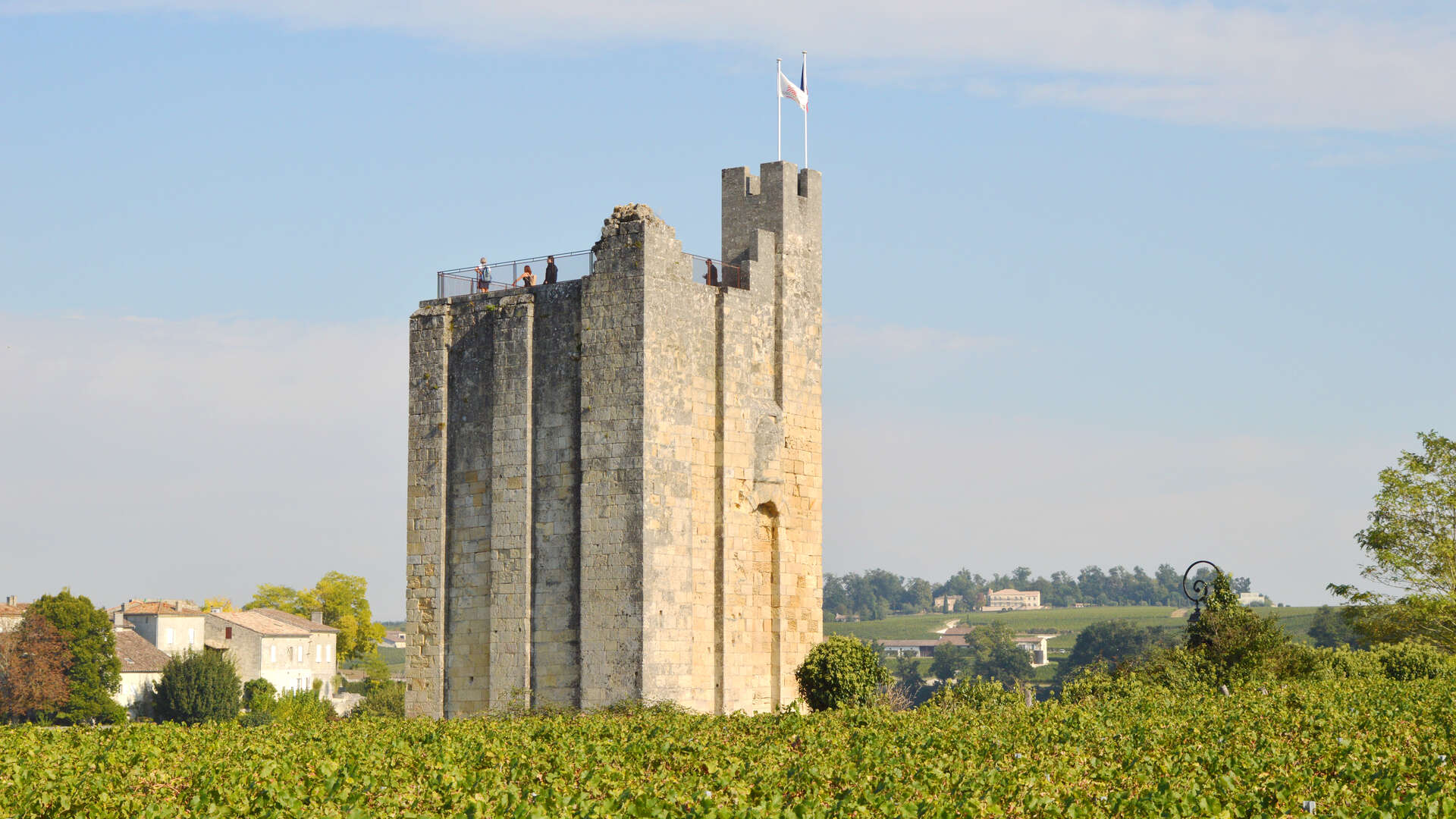
When contemporary architecture meets wine
With their contemporary edifices seamlessly blending into the landscape, Chateaux La Dominique and Faugères are spearheading the architectural revival of the vineyard. At Château Faugères, the monumental and futuristic wine storehouse designed by Mario Botta offers a spectacular balance between concrete and light. This masterful work of art is locally referred to as the “cathedral of wine”. In a different style, Château La Dominique has entrusted Jean Nouvel with the creation of a sleek-designed 600 sqm winery. Above the sumptuous and reflective, dark red-coloured fermenting room lies the estate’s restaurant. You can have lunch in the panoramic terrace while enjoying sweeping views of the vineyards of Saint-Émilion and Pomerol.
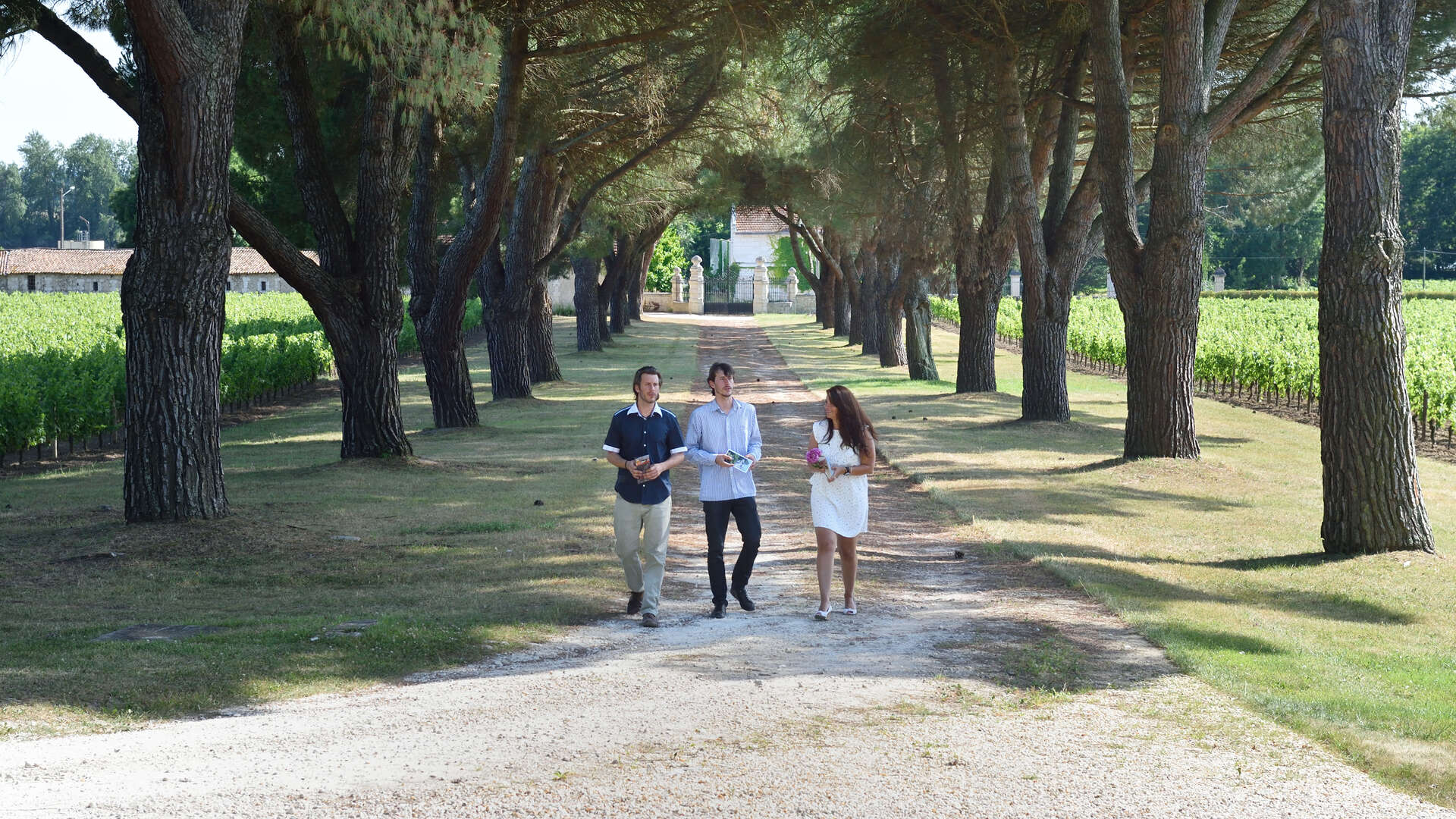
Discover Saint-Emilion, Pomerol and Fronsac



